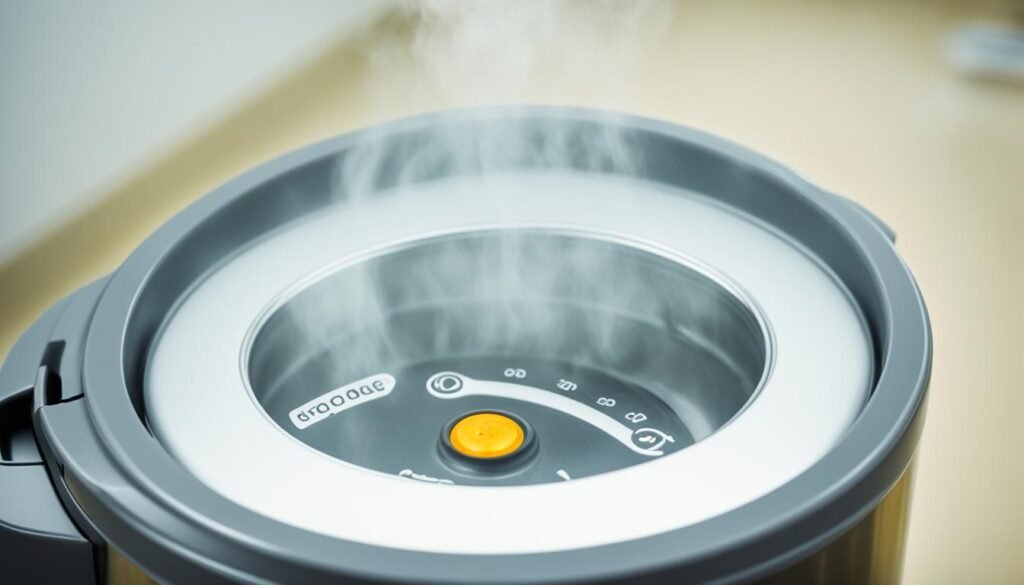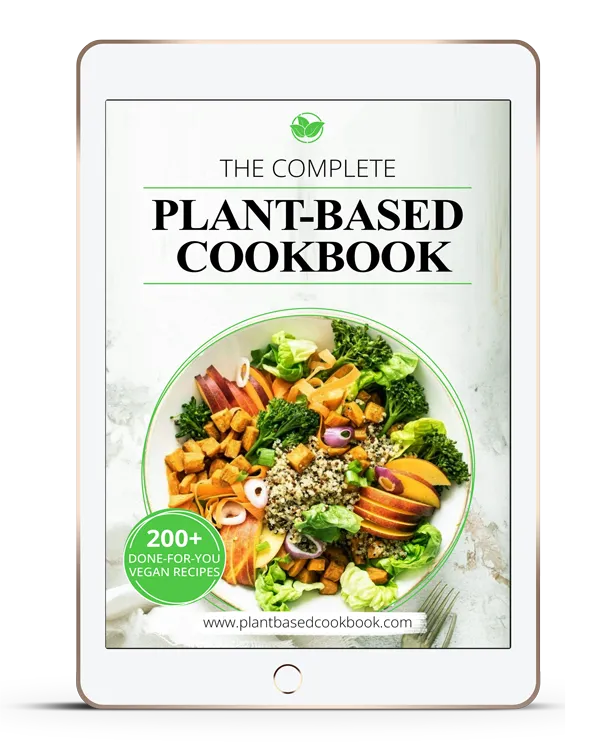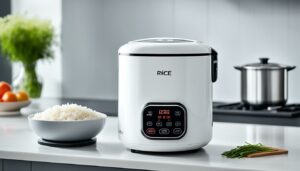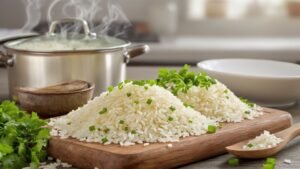Ever pondered if that rice in your cooker is still edible? I’ve found myself questioning whether to eat or discard it. Let’s explore the realm of rice cooker safety and discover how to maintain rice freshness.
Rice cookers are indeed invaluable in the kitchen, but they don’t magically preserve food. The warm setting can extend the life of your rice, yet there’s a critical limit. Prolonged exposure to room temperature can transform your rice into a breeding ground for bacteria. This is a serious concern.
I aim to enlighten you on the nuances of rice cooker warm settings, provide insights on maintaining rice freshness, and shed light on the safety of stored rice. By the conclusion, you’ll be well-versed in rice storage, ensuring you can enjoy perfectly cooked rice without any concerns.
Table of Contents
ToggleUnderstanding Rice Cooker Functionality
Rice cookers have transformed how we prepare this essential food item. Grasping the functionality of rice cookers allows us to optimize their use. Let’s explore the critical components and operations of a standard rice cooker.
Basic Components of a Rice Cooker
A rice cooker is comprised of several vital parts that collaborate to produce perfectly cooked rice consistently:
- Heating element
- Inner cooking pot
- Thermostat
- Outer body
- Lid with steam vent
How Rice Cookers Work
The cooking process of rice in a rice cooker is straightforward yet efficient. It initiates by boiling water and rice together. As the water evaporates, the pot’s temperature increases. This escalation activates the thermostat to engage the cooker in rice cooker warm mode, thereby preventing overcooking.
The Importance of the “Keep Warm” Feature
The “keep warm” feature is paramount for food safety and quality retention. It sustains the rice at a secure temperature, inhibiting bacterial proliferation while keeping the rice fluffy and tasty. Contemporary rice cookers boast superior insulation and temperature regulation, thereby enhancing their capacity to maintain rice at a safe temperature for extended durations.
| Feature | Function | Benefit |
|---|---|---|
| Heating Element | Provides heat for cooking | Ensures even cooking |
| Thermostat | Monitors temperature | Prevents overcooking |
| Keep Warm Mode | Maintains safe temperature | Extends serving time |
Understanding these aspects of rice cooker functionality empowers you to leverage your appliance fully and savor perfectly cooked rice every occasion.
The Science Behind Rice Spoilage
I’ve always been intrigued by the science of food safety, particularly with cooked rice storage. Grasping the reasons behind rice spoilage is essential for effective prevention. Let’s explore the microscopic realm that impacts our beloved grain.
Bacterial Growth in Cooked Rice
Cooked rice becomes a haven for bacteria. Its warmth, moisture, and nutritional content create an ideal environment for microorganisms. At the forefront is Bacillus cereus, a bacterium that thrives even after cooking. These microbes can proliferate swiftly as the rice cools down.
Factors Affecting Rice Spoilage
Several elements influence the spoilage rate of rice:
- Temperature: The danger zone is between 40°F and 140°F
- Time: The longer rice sits out, the riskier it becomes
- Moisture: Damp conditions accelerate bacterial growth
- Initial contamination: Poor handling can introduce more bacteria
Bacillus Cereus and Its Risks
Bacillus cereus poses a significant threat. This bacterium produces toxins that can lead to food poisoning. Moreover, these toxins remain stable under heat, making reheating ineffective. Thus, proper cooked rice storage is vital. Symptoms of B. cereus poisoning include nausea, vomiting, and diarrhea. To avoid this, cool rice swiftly and store it either below 40°F or above 140°F.
How Long Can Rice Sit in Rice Cooker
The duration for which rice can stay warm in a rice cooker varies by model and the quantity of rice. Typically, most rice cookers can keep rice warm for 4-12 hours. This capability ensures the rice remains fresh for a considerable period post-cooking.
For those with high-end rice cookers, such as Zojirushi models, the warming period can be even longer. However, it’s crucial not to exceed 12 hours of warming. Prolonged warming can desiccate the rice, potentially fostering bacterial growth.
To ensure the best flavor and safety, it’s advisable to refrigerate leftover rice within two hours of cooking. This approach is in line with expert advice on rice storage. It also mitigates the risk of foodborne illness.
| Rice Cooker Type | Safe Warm Duration | Recommended Action |
|---|---|---|
| Basic Models | 4-6 hours | Refrigerate after 2 hours |
| Mid-Range Models | 6-8 hours | Refrigerate within 4 hours |
| High-End Models | 8-12 hours | Refrigerate before 12 hours |
These guidelines serve as a starting point. Always trust your instincts and adhere to established food safety protocols to ensure your rice is consumed safely.
Safe Temperature Zones for Cooked Rice
Understanding safe temperature zones is crucial for stored rice safety. I’ll guide you through the key temperature ranges to keep your rice fresh and safe to eat when using a rice cooker warm setting.
Ideal Temperature Range
For optimal rice storage, maintain a temperature above 140°F (60°C). This range keeps your rice warm and tasty while preventing bacterial growth. Most rice cooker warm settings aim for around 150°F, which is perfect for short-term storage.

Danger Zone Temperatures
Avoid keeping rice between 40°F and 140°F (4°C to 60°C). This range is a breeding ground for bacteria, particularly Bacillus cereus. If your rice sits in this danger zone for over two hours, it’s best to discard it.
USDA Guidelines
The USDA provides clear guidelines for rice storage. Here’s a quick breakdown:
- Keep hot foods above 140°F
- Store cold foods below 40°F
- Cool rice to 70°F within two hours of cooking
- Further cool to 40°F within the next four hours
By following these guidelines and using your rice cooker warm setting correctly, you can ensure stored rice safety and enjoy delicious, worry-free meals.
Best Practices for Storing Rice in a Cooker
Keeping rice fresh in your rice cooker is straightforward with the right methods. Utilizing the rice cooker warm mode effectively is crucial for maintaining quality. Here are some essential tips I always recommend:
Initially, employ the “keep warm” function for a maximum of 12 hours. This approach inhibits bacterial growth while ensuring keeping rice fresh. Post-cooking, I always fluff the rice to prevent clumping and sogginess. Keeping the lid ajar maintains heat and moisture, essential for the rice’s texture.
For extended storage, cool the rice swiftly and refrigerate it in airtight containers. When reheating, a dash of water is necessary to restore moisture. Uncooked rice should be stored in airtight containers in a cool, dry area or the refrigerator.
| Rice Type | Shelf Life (Uncooked) | Refrigerator Life (Cooked) |
|---|---|---|
| White Rice | 25-30 years | 4-6 days |
| Brown Rice | 3-6 months | 3-5 days |
| Wild Rice | 6-8 months | 5-7 days |
Brown rice’s oil content reduces its shelf life compared to white rice. By adhering to these guidelines, you’ll consistently enjoy perfectly cooked rice.
Reheating and Repurposing Leftover Rice
Keeping rice in a cooker is convenient, but what about reheating and using leftovers? Let’s delve into safe reheating methods and creative ways to utilize those extra grains.
Safe Reheating Methods
Proper reheating is key for stored rice safety. I always add a splash of water before reheating rice in a cooker. This prevents drying and ensures even heating. The aim is to heat the rice to 165°F throughout.
- Microwave: Heat in short bursts, stirring between each
- Stovetop: Use a pan with a tight-fitting lid, add water, and heat on low
- Rice cooker: Add water, stir, and use the reheat function if available
Tasty Leftover Rice Recipes
Don’t let leftover rice go to waste! I enjoy transforming it into tasty new dishes. Here are some of my top recipes:
| Recipe | Main Ingredients | Prep Time |
|---|---|---|
| Kimchi Fried Rice | Rice, kimchi, vegetables, egg | 15 minutes |
| Tuna Seafood Pilaf | Rice, tuna, peas, onions | 20 minutes |
| Artichoke Mixed Rice | Rice, artichokes, herbs, lemon | 25 minutes |
Spotting Spoiled Rice
To maintain stored rice safety, I always inspect for signs of spoilage before consumption. Be vigilant for:
- Unpleasant odors
- Slimy or mushy texture
- Discoloration or mold growth
Refrigerated rice can last up to 5 days, while frozen rice can be stored for 6 months. If unsure, it’s best to discard it and start fresh.
Conclusion
I’ve delved into the nuances of employing a rice cooker’s warm setting to preserve rice’s freshness and safety. It’s evident that these devices can sustain rice for a few hours. However, it’s advisable to prioritize caution. For the best results, I suggest refrigerating leftover rice within two hours post-cooking.
Ensuring food safety is paramount when dealing with stored rice. Adhering to proper cooling and storage methods allows for worry-free enjoyment of your rice. The “keep warm” feature is ideal for brief periods but not designed for extended storage.
Ultimately, achieving a balance is crucial. Utilize your rice cooker judiciously, stay informed about food safety protocols, and you’ll be able to relish in delicious, secure meals while reducing waste. Armed with these insights, you’re now prepared to leverage your rice cooker effectively, ensuring your meals are both delectable and safe.
FAQ
How does a rice cooker work?
A rice cooker features a heating element, an inner cooking pot, and a thermostat. It boils water and rice, creating steam that cooks the rice. When the water is absorbed, the temperature increases, turning on the thermostat’s “keep warm” mode.
What causes rice to spoil?
Cooked rice can spoil due to bacterial growth, especially Bacillus cereus. This bacteria produces toxins that cause food poisoning. Temperature, moisture, and time significantly affect spoilage.
How long can rice safely sit in a rice cooker on the “keep warm” setting?
Rice can stay in a rice cooker on the “keep warm” setting for 4-12 hours. This depends on the cooker model and the amount of rice. Yet, it’s advised not to leave rice in the cooker for over 12 hours, even with advanced models.
What is the ideal temperature range for keeping rice warm?
The ideal temperature for keeping rice warm is above 140°F (60°C). Bacteria grow most between 40°F and 140°F (4°C to 60°C).
How should I store leftover rice for optimal freshness?
For optimal rice quality, use the “keep warm” function for up to 12 hours. For longer storage, cool the rice quickly and refrigerate it in airtight containers. When reheating, add a bit of water to restore moisture.
How can I safely reheat leftover rice?
To reheat rice safely, use a microwave or stovetop method. Ensure it heats to at least 165°F (74°C) throughout. Adding a splash of water helps prevent drying out.
How can I repurpose leftover rice?
Leftover rice is perfect for fried rice dishes, salads, or pilafs. Creative ideas include Kimchi Fried Rice, Tuna Seafood Pilaf, and Artichoke Mixed Brown Rice.
Source Links
- https://ask.metafilter.com/363505/Is-it-safe-to-eat-rice-left-in-the-rice-cooker-overnight
- https://www.zojirushi.com/blog/tips-on-how-to-store-rice-before-and-after-cooking/
- https://www.unclebuffalo.com.au/blogs/recipes/how-long-can-rice-stay-warm-in-cooker?srsltid=AfmBOorrvqKV7_A8VBGWdDnXkbrmVwDzgzeL_1hMIYFjahhELccY9PRP






